Interviews with Past Winners
Hitoshi Ohbi
“Sahara”
2023 Grand Prix
Hitoshi Ohbi won the Grand Prix in the KOKUYO DESIGN AWARD 2023, having been chosen from among 1,023 entries. The work “Sahara” is an undivided palette with beautiful irregularities like the ridge of a desert. It was designed to encourage children to paint freely, and was highly evaluated that “reminding us once again that design requires fun,” “a tool that expands the individuality of the users,” and “having the potential to change the stereotyped concept of colors.” We asked the designer Mr. Hitoshi Ohbi about the process from the birth of the work to the Final Judging, as well as his thoughts after winning the award.
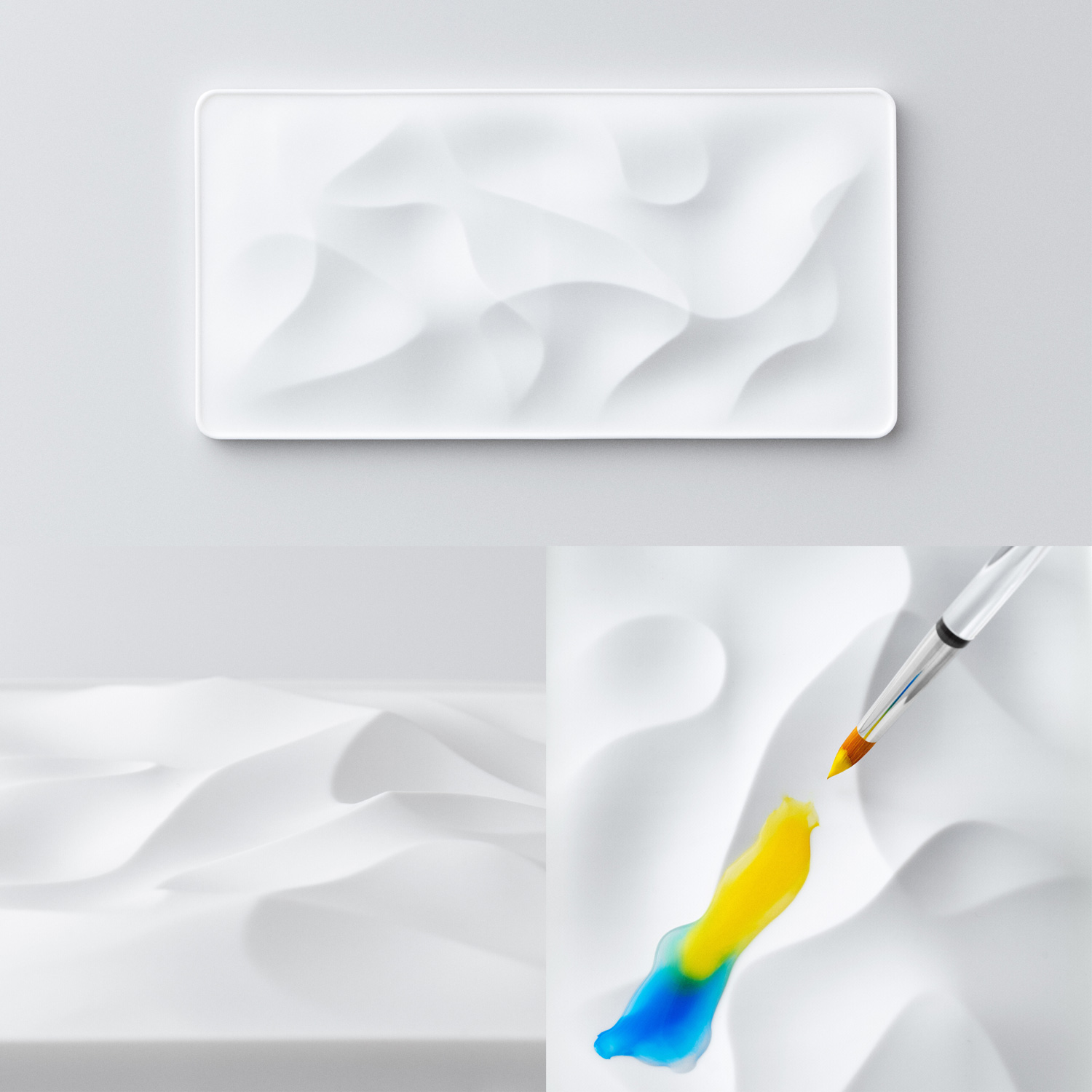
Based on my childhood experiences
―― You were a sophomore at the time when you entered the competition. What motivated you to enter the KOKUYO DESIGN AWARD?
Ohbi: During my summer vacation at university, I wanted to do something that I could say, “I did this,” but I couldn’t do anything special and time just went by. I knew about the KOKUYO DESIGN AWARD, so I sometimes look at the website and think about it, but rather than thinking about it exclusively for the entry, I spent my time thinking about it when I remembered something.
―― How did you come up with the idea of Sahara?
Ohbi: When I was vaguely thinking that the summer vacation would be over soon, I suddenly remembered the time I had to draw a poster for my summer homework when I was in elementary school. It brought back memories of when I painted with paints and a palette which I was not accustomed to using, and I thought, “There is not enough space on the palette.” There were many rules to use a palette, such as where to place paints, mix colors, and put fingers on a very small surface. My first thought was that it would be nice to have a palette that I could use more freely.
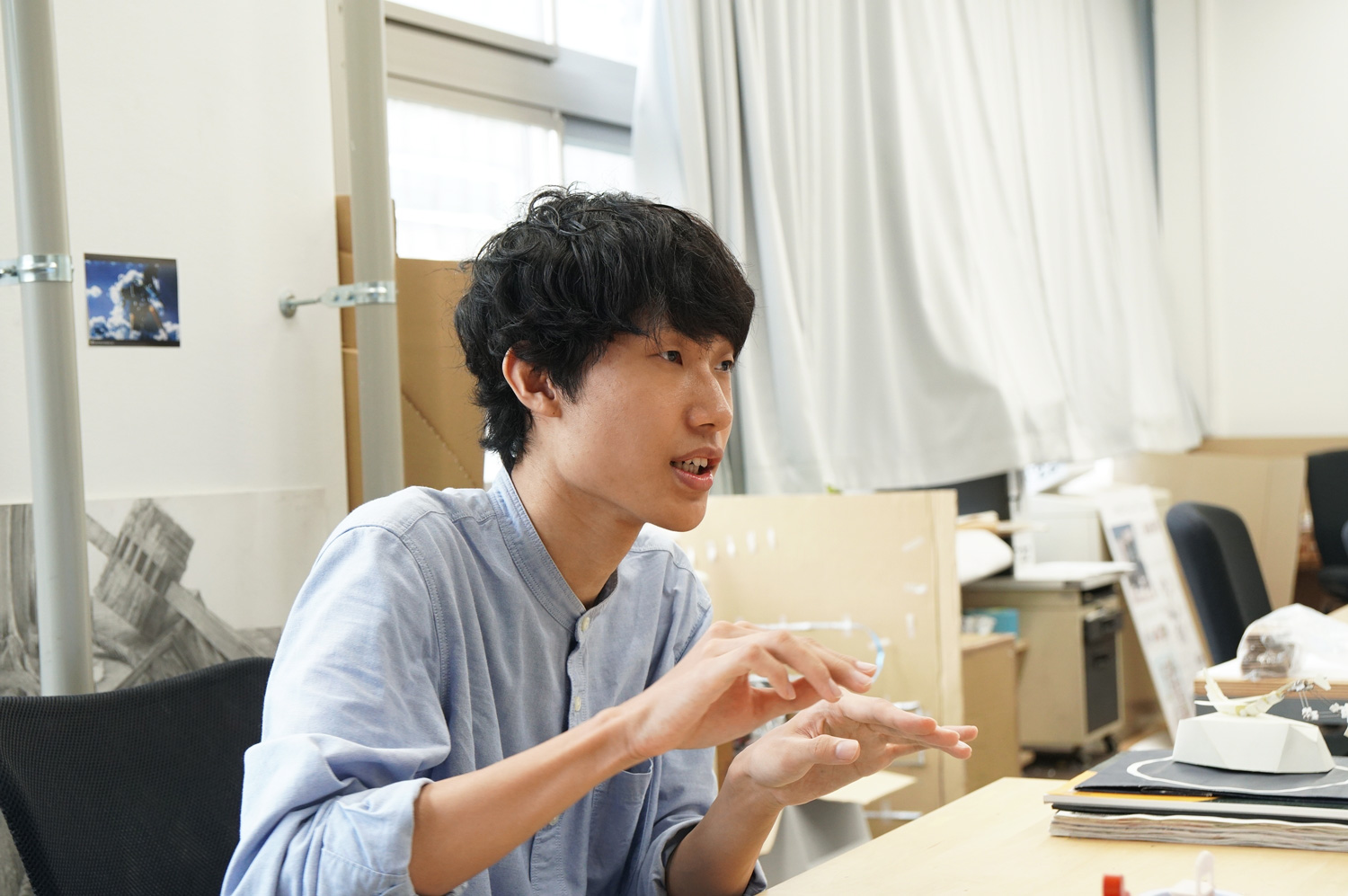
―― Why did you decide to create an image of a desert as a shape of a palette that can be used freely?
Ohbi: This is also related to my summer homework when I was in elementary school, but I came up with the idea from “The Little Prince,” which I read as the homework of my book review. “The Little Prince” depicts themes such as “child spirit” and “imagination” through the interaction between the prince and the pilot who crash-landed in the desert which I felt it had an affinity with the idea of “a palette for children,” and I expanded the idea from there.
Be thoroughly prepared to convey the concept
―― So, the story of Sahara, which is also expressed in the video,was already there from the beginning. What was important to you in expressing on the presentation sheet?
Ohbi: The concept for the work was actually finalized about a week before the submission deadline. Since this was the first time for me to enter a competition, I made the presentation sheet in such a hurry, referring to the samples on the website. At this stage, there was no model, so I used CG to create an image, but I managed to make it in time because the waveform of the desert came out better than I expected.
―― How did you feel when you were notified that you had been selected as a finalist?
Ohbi: I was so happy. Of course, I was happy to pass the judging, but Sahara was the best product idea I had ever thought of, so I was happy to see that my sense of product design was not so wrong.
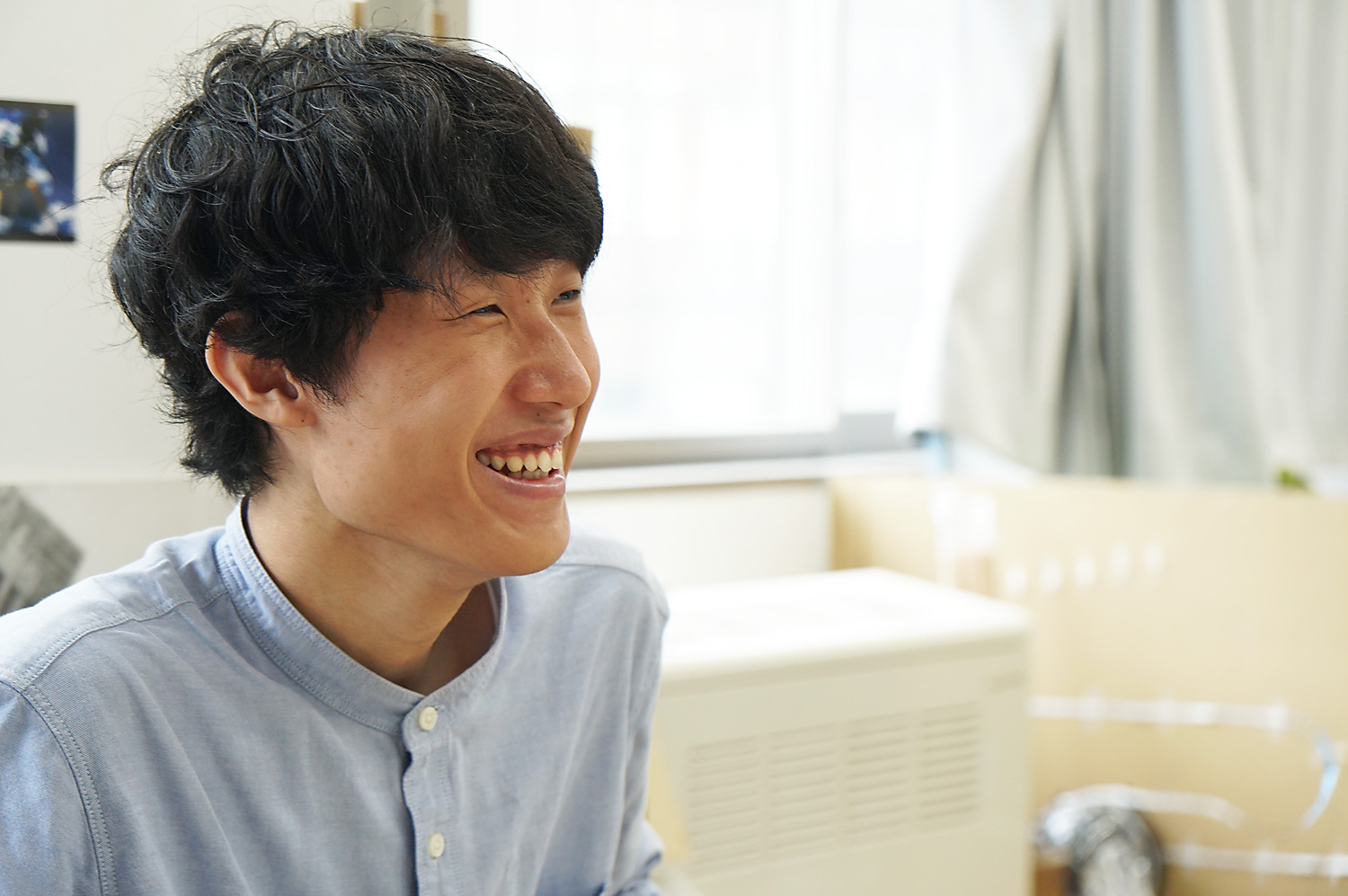
Mr. Hitoshi Ohbi who won the Grand Prix in the KOKUYO DESIGN AWARD 2023
―― What did you keep in mind when making the model of the work?
Ohbi: I think the most fun part of using this palette is when the colors are mixed on it and creates colors that you didn’t even expect, so I was particular about the waveform pattern.
The model was first partially printed with a 3D printer, then the surface was filed several times, and a “mold” was made from the pasted pieces. The mold was used to create several models of the same waveform.
―― The presentation at the Final Judging featured actual drawings by the children using the Sahara model, as well as videos of them doing so.
Ohbi: I took the model to an after-school in my neighborhood and had children actually draw pictures using it. I didn’t explain anything in particular, but they seemed to enjoy painting more than I had imagined. Some of the children ended up mixing so many colors that the palette was covered completely black, but I was very happy that they enjoyed using it until that point. It was a very rewarding experience for me.
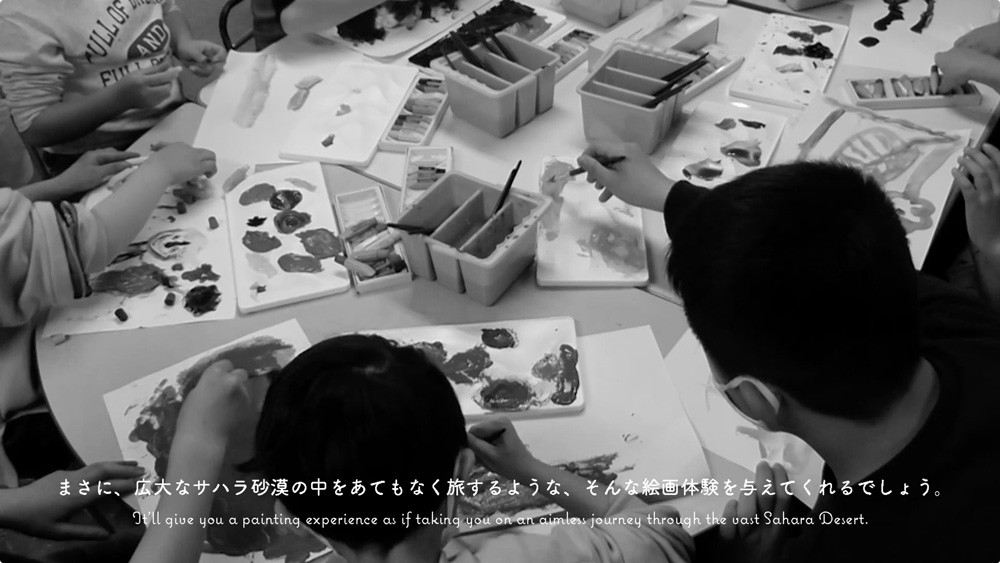
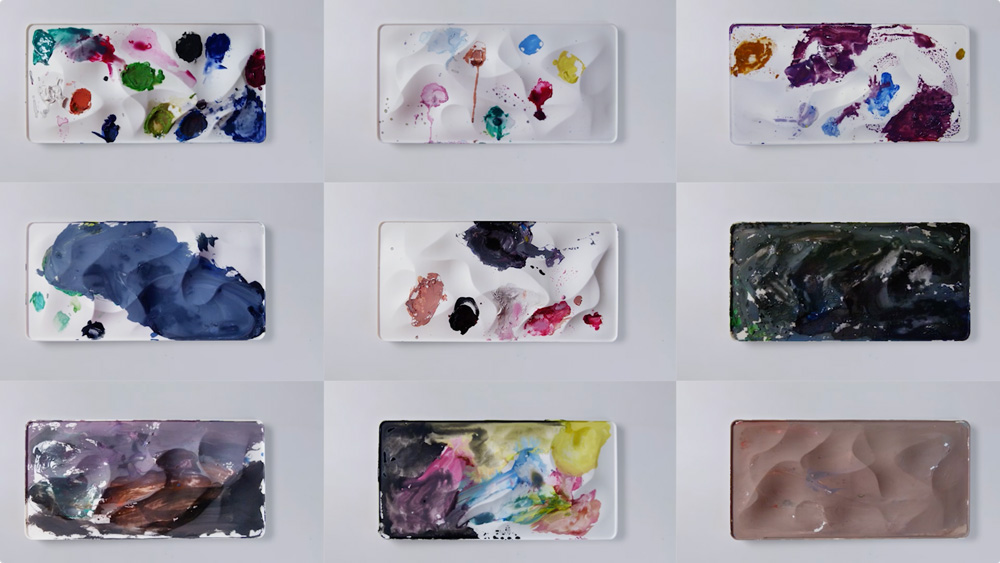
Children using Sahara (Left) and Sahara after painting (Right)
―― What was the most memorable part of your presentation at the Final Judging and Q&A session?
Ohbi: During the preparation period for the Final Judging, I was really busy making models, shooting and editing videos for the presentation, making animations, drawing pictures for them, updating presentation sheets, and so on. However, I felt that I had done everything I could to prepare, so I was not as nervous as I thought and was able to give my presentation as expected on the day of the Final Judging.
All the judges were provided with paints and brushes and asked to use Sahara in practice. Perhaps because I have been looking at and touching Sahara almost every day, I lost a fresh sense of natural mixing of colors and creating new colors, but it was memorable that all the judges said they had a fun.
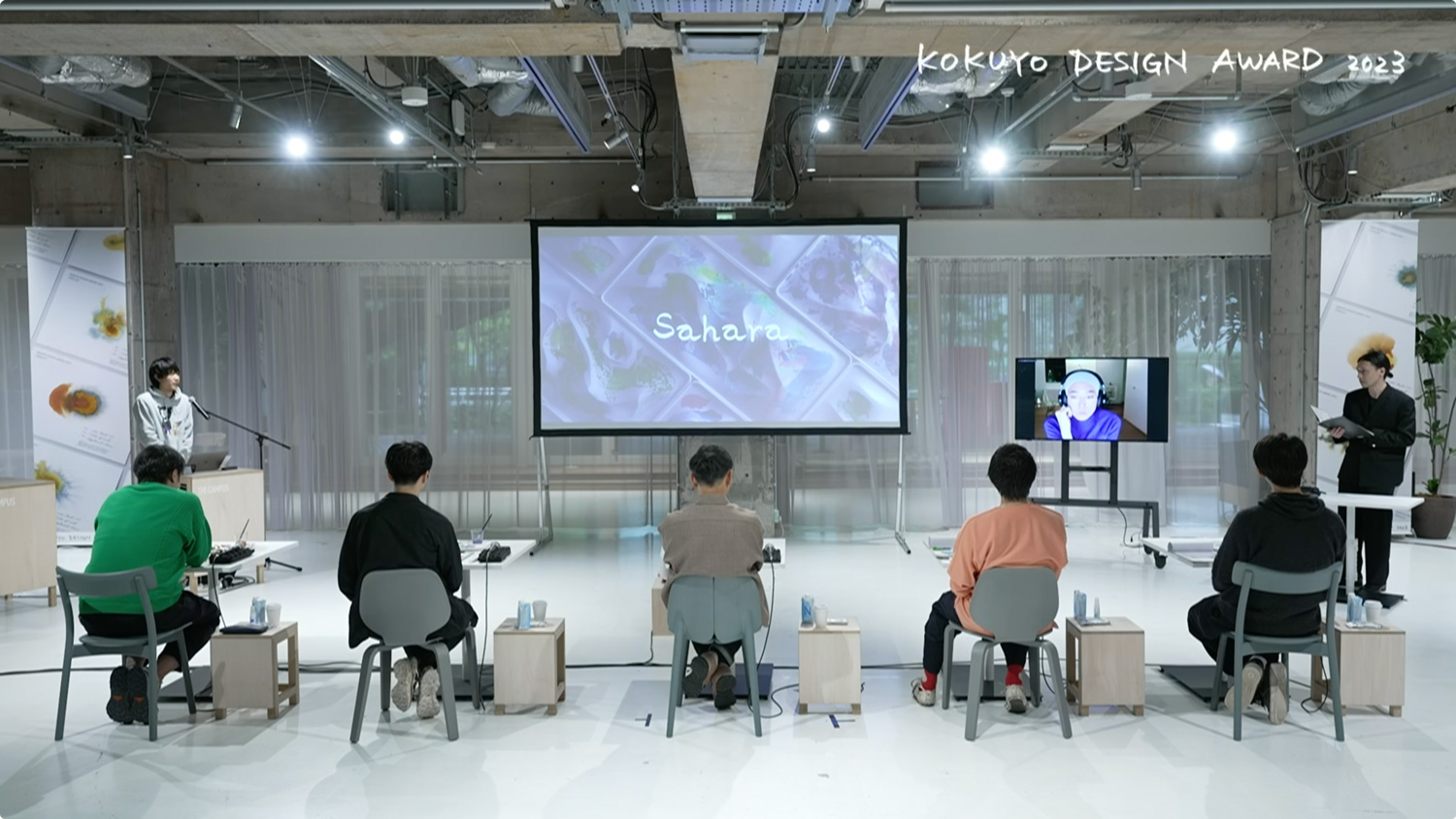
The final presentation. The judges watching a storytelling presentation inspired by “The Little Prince”
Facing the essence of ideas
―― What was it like to hear the announcement of the Grand Prix?
Ohbi: When my name was called at the announcement of the Grand Prix, I felt a mixture of surprise and joy. I have been thinking about Sahara for about six months since I entered the competition, so even if I did not win the award I would have no regrets. But I am very happy and very fortunate to have received the Grand Prix for the work that I put lots of thoughts in.
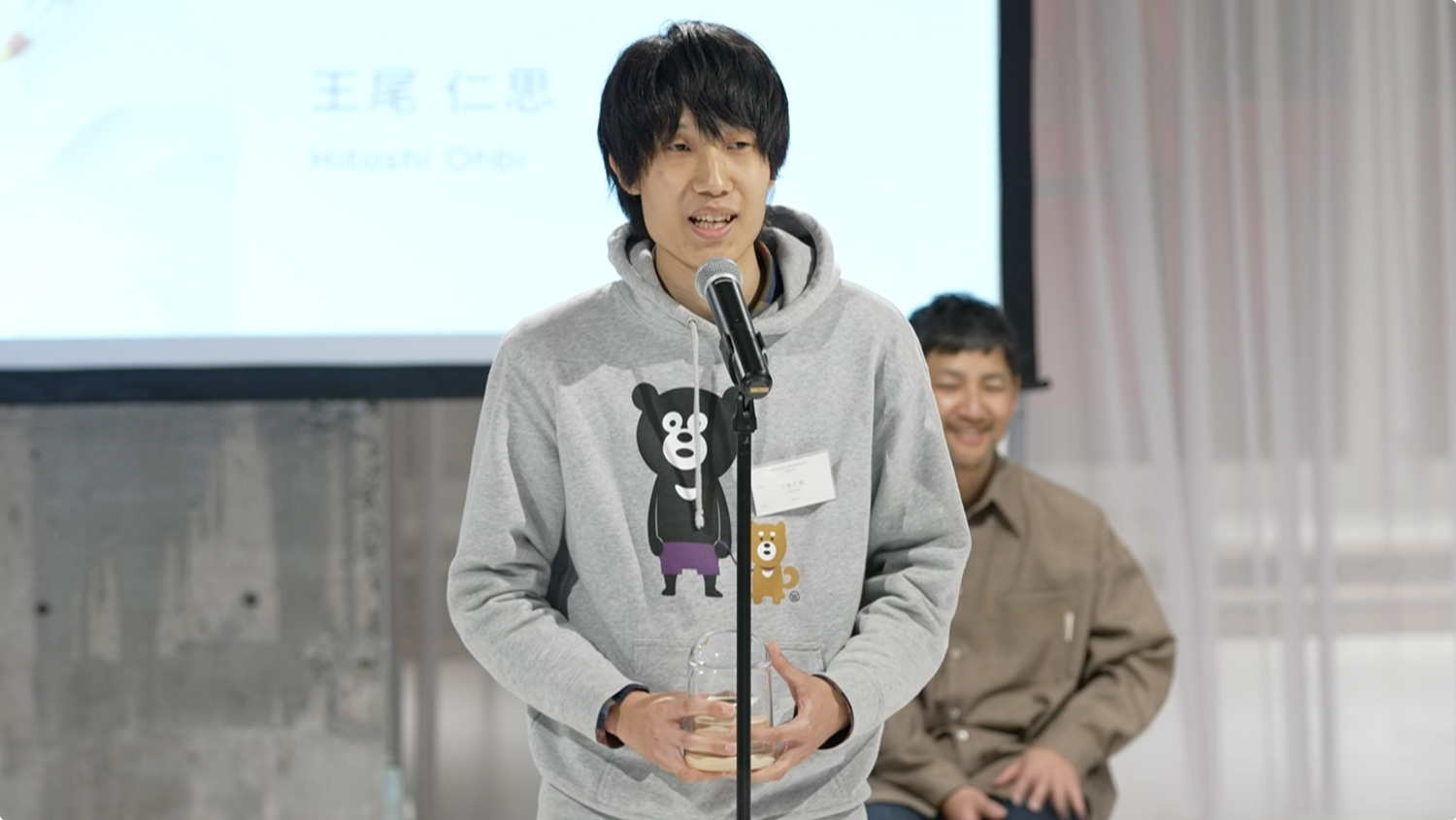
At the Award Ceremony. His comment, “I’d like to keep making healthy products without getting carried away,” put the audience at ease.
―― Did anything change after winning the award?
Ohbi: Through this experience, I was able to realize the simple fact that “good things are transmitted.” I feel as if I was pushed by my own desire to continue to be involved in design and manufacturing in some way in the future.
―― Please give advice to people who are thinking of entering the KOKUYO DESIGN AWARD.
Ohbi: Actually,as a competition beginner, I was very worried about whether all the judges would be more interested in making models with different waveforms, or whether they would think that I was avoiding set forms. But at the end, no judges mentioned those points at all. Rather, they asked how much thoughts I had given to what actually happens on the palette that mimics a desert and the experiences the children can have. I thought that small tricks would not work. From my own experience, I feel that the most important thing is to face the product you propose openly and deeply, rather than how to get through the competition.
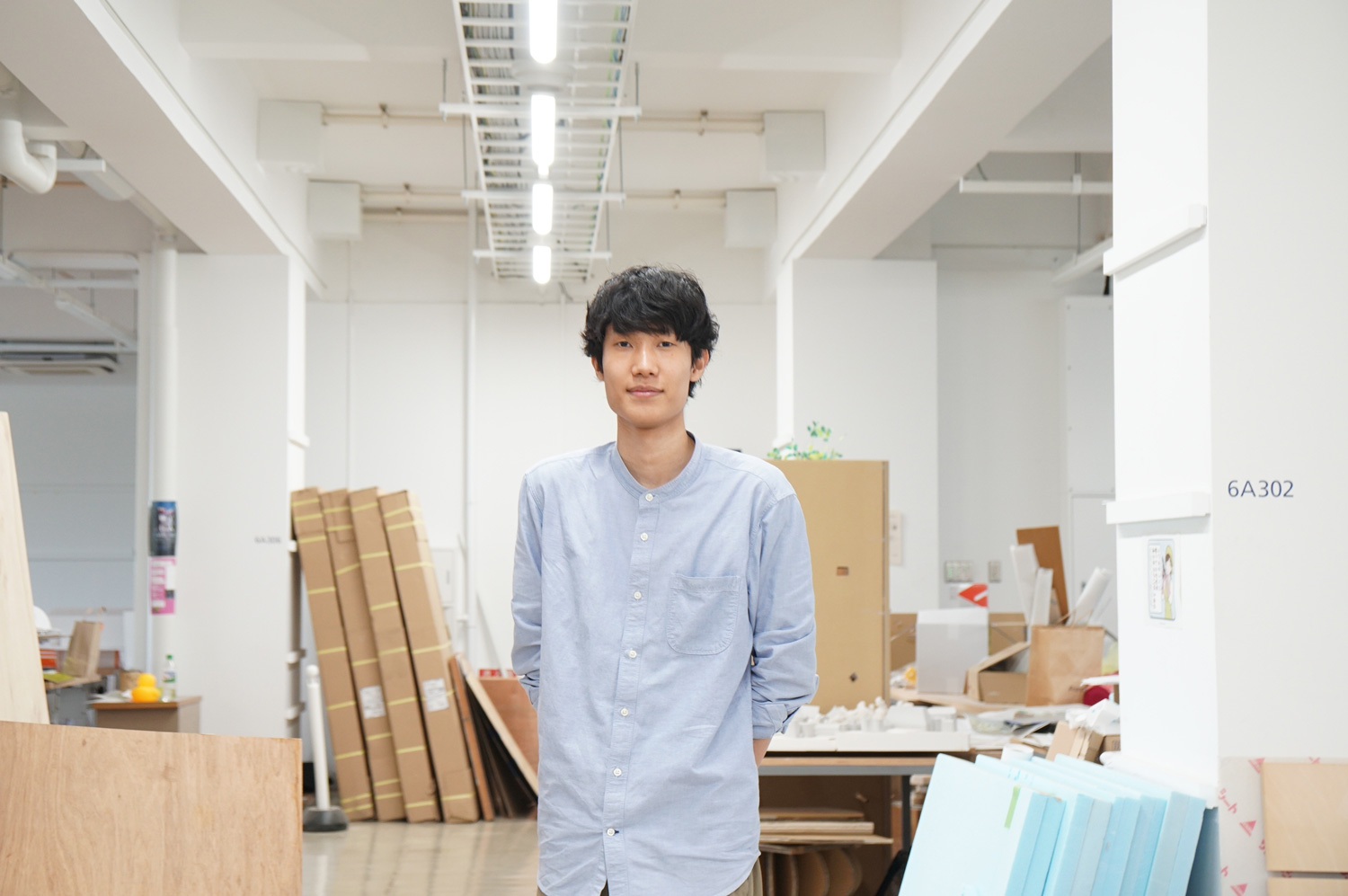
At the workshop on the campus of University of Tsukuba
























